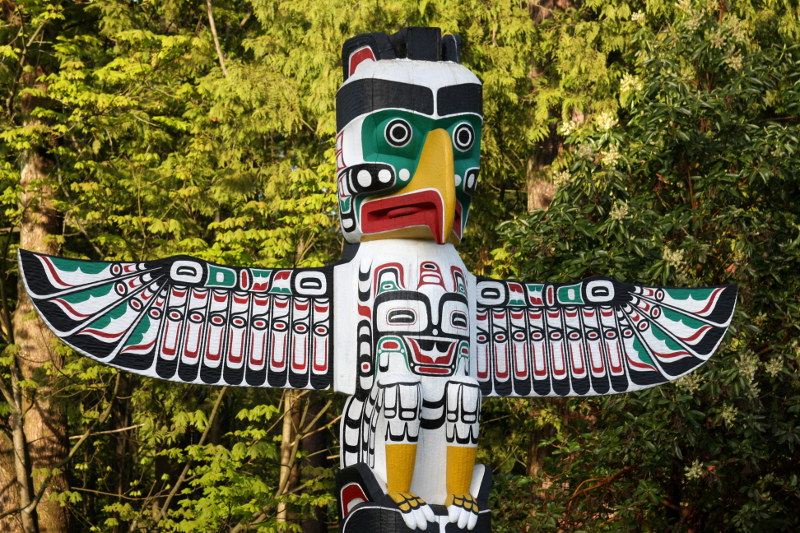There’s no imagery that says “British Columbia” more than a Totem Pole. I’ve not seen totems outside of British Columbia (or even Vancouver for that matter), though this doesn’t mean they don’t exist. Historically, there are no early examples because once carved, poles are quickly re-taken by the damp forest rot.
The generally accepted theory is that the practice of carving poles originated with the Haida Gwaii and then spread to the rest of the Pacific Northwest (Alaska to Oregon).
When Europeans originally came to the Pacific Northwest, they thought that the poles were carvings used in religious ceremonies or as idols/icons. Some Christian missionaries went so far as to demand the poles be burned as objects of heathen worship.
However, as more people came and observed practices, they saw that poles would be built, be ignored, and then left behind when groups moved to the next camp; so, they couldn’t be important religious artifacts.
In essence, totem poles are a means in which people could communicate with each other, a community board or a newspaper of sorts. They tell stories, of unpleasant things that happened (a murder), indicate social structure (a totem pole in front of your house is seen as a sign of wealth), and can be used for shaming (in the case of unpaid debt or identifying a criminal).
All the totem pole images in the gallery below come from Stanley Park. However, in Vancouver, this isn’t the only place where you can find poles. They’ve become so commonplace and integrated into the city’s culture that they’re everywhere, including the airport.
